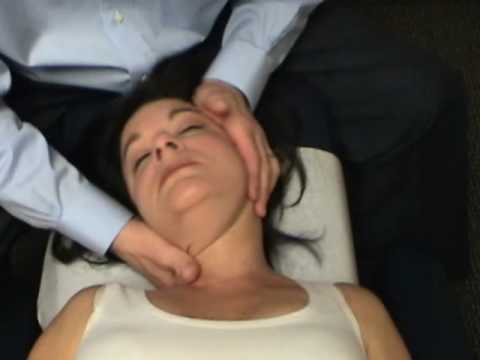
Experts say a common chiropractic treatment for neck pain, which involves applying thrusts to the neck area of the spine, should be abandoned.
Writing in the British Medical Journal, Neil O’Connell from the Centre for Research and Rehabilitation at Brunel University and colleagues say that cervical spine manipulation carries a low risk of stroke, resulting from damage to the major neck arteries.
They say the technique is “unnecessary and inadvisable”.
But other experts believe it is a valuable addition to patient care.
Spinal manipulation can be used to treat neck and back pain or other musculoskeletal conditions. It is a technique used by physiotherapists, osteopaths and most commonly by chiropractors.

Cervical spine manipulation focuses on the neck and involves a range of high-speed manual manoeuvres that stretch, mobilize or manipulate the upper spine in order to relieve pain.
Neil O’Connell and colleagues argue that cervical spine manipulation “may carry the potential for serious neurovascular complications”.
They also say that studies “provide consistent evidence of an association between neurovascular injury and recent exposure to cervical manipulation.”
Such injuries include tearing the lining of the vertebral artery, which is located in the neck and supplies blood to the brain, and stroke.
O’Connell and colleagues refer to a Cochrane review of randomized trials of neck manipulation or mobilization which found that as a stand-alone treatment, the technique provides only moderate short-term pain relief.
They point to other recent, high-quality trials which suggest that manipulation is no better than other treatments such as physical exercise.
In their view, the risks of using manipulation for neck pain outweigh the benefits.
They conclude: “The potential for catastrophic events and the clear absence of unique benefit lead to the inevitable conclusion that manipulation of the cervical spine should be abandoned as part of conservative care for neck pain.”
However, not all experts agree.
Writing in the same edition of the BMJ, Professor David Cassidy, from the University of Toronto, and colleagues argue that cervical spine manipulation should not be abandoned as a treatment for neck pain.
They point to high quality evidence that “clearly suggests that manipulation benefits patients with neck pain” and raises doubt about any direct relation between manipulation and stroke.
But they want to see more research into the pros and cons of this and other techniques with the aim of identifying safe and effective treatments.